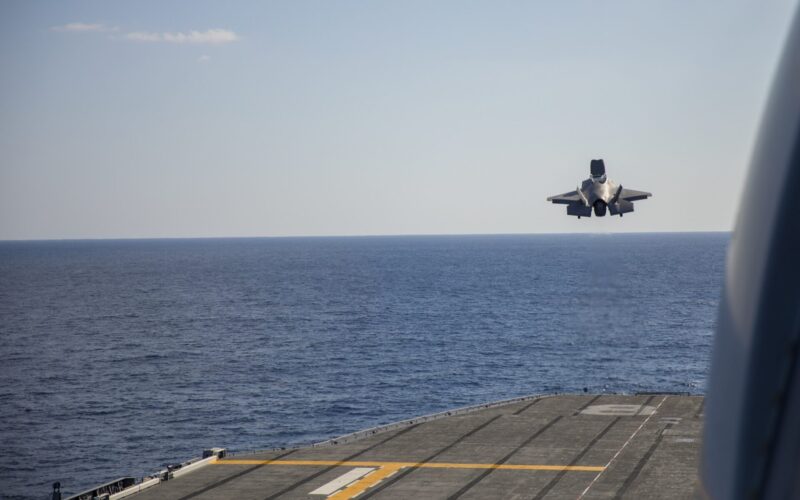Japan has taken delivery of its first three F-35B Lightning II stealth fighters, a milestone that restores carrier-capable fixed-wing aviation to the country for the first time since the end of World War II.
The short take-off and vertical landing (STOVL) jets arrived at Nyutabaru Air Base in Miyazaki Prefecture, where they will be operated by the Japan Air Self-Defense Force’s (JASDF) 8th Air Wing. The aircraft will eventually embark aboard the modified Izumo-class helicopter destroyers JS Izumo and JS Kaga, which are undergoing extensive refits to support F-35B operations.
The arrival of Japan’s first F-35B Lightning II jets marks the country’s first carrier-capable fixed-wing aviation since World War II. Following its defeat in 1945, Japan only operated helicopters at sea and land-based fixed-wing aircraft for maritime patrol and transport, with no shipboard fighter capability.
That situation changed in October 2021, when US Marine Corps F-35Bs conducted trials on the Izumo, the first fixed-wing operations from a Japanese vessel in more than seven decades. The newly delivered F-35Bs will eventually embark aboard the modified Izumo-class ships, restoring an indigenous, if limited, fixed-wing aviation capability to Japan’s maritime forces.
Commissioned in 2015, the 27,000-ton Izumo was originally designed as a helicopter destroyer for anti-submarine warfare and humanitarian missions. At 248 meters in length, it is the largest surface combatant in the Japan Maritime Self-Defense Force (JMSDF) since WWII.
Officially classified to comply with Japan’s post-war constitution, its design nonetheless allowed for future adaptation. In 2018, Tokyo approved a multi-stage upgrade program to enable F-35B operations, which included reinforcing the flight deck, adding heat-resistant coating, and modifying the bow shape. The second ship in the class, JS Kaga, is undergoing similar modifications.
Japan plans to acquire 42 F-35Bs as part of a broader order for 147 Lightning II fighters, which also includes the conventional take-off and landing F-35A variant already operated by the Japanese Air Self-Defense Force. The F-35Bs will extend Japan’s defensive and strike reach, and bolster air coverage for the country’s southwestern islands, which are regularly approached by Chinese air and naval assets.

